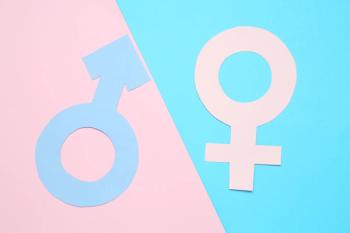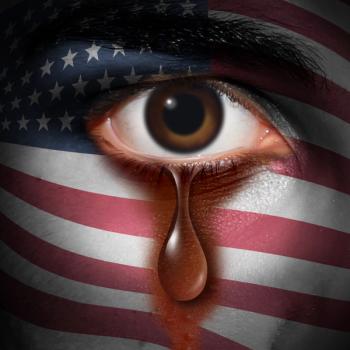
Changes and Challenges in Our Psychological Identities
Despite the disappearance of identity variations in diagnostic classifications, psychiatrists can contribute to solving social challenges.
PSYCHIATRIC VIEWS ON THE NEWS
Do I contradict myself?Very well, then, I contradict myself:(I am large-I contain multitudes)
–Walt Whitman, Song of Myself
I am he as you are he as you are meAnd we are all together . . .I am the eggman, they are the eggmenI am the walrus, goo goo g’ joob
–The Beatles, I Am the Walrus
These lines from both the poet Walt Whitman and the Beatles span about 150 years. Like the best art, they have a depth of meaning that can be predictive and prescient.
[[{"type":"media","view_mode":"media_crop","fid":"38391","attributes":{"alt":"identity disorders","class":"media-image media-image-right","height":"172","id":"media_crop_4636717388972","media_crop_h":"0","media_crop_image_style":"-1","media_crop_instance":"3879","media_crop_rotate":"0","media_crop_scale_h":"0","media_crop_scale_w":"0","media_crop_w":"0","media_crop_x":"0","media_crop_y":"0","style":"float: right;","title":"©Lightspring/shutterstock.com","typeof":"foaf:Image","width":"172"}}]]Public identities
In American culture, we are witnessing a rapid evolution of public processing of our personal identities. On a basic level, this includes taking “selfies” and posting Facebook profiles. On another level, socially acceptable aspects of our identities are being expanded.
Gay marriage is rapidly becoming socially acceptable. As gay marriage has become legal in more and more states, it has changed the meaning of the personal identify of each of the spouses. However, the counter reaction to gay marriage is resulting in the anticipated Supreme Court ruling on this development. There is also more public expression of a variety of sexual preferences.
We also are observing and participating in a rapid public processing of gender identity preference. Twenty years ago, when I first began to work with those with gender identity disorders, public disclosure was rare due to prejudice, discrimination, and misunderstanding. Now, Caitlyn Jenner can come out on the cover of the July issue of Vanity Fair, followed by a cover story in the New York Times on
From the racial or cultural standpoint, a critical uproar has occurred about a former Spokane NAACP official who posed and presented herself as “black.”Her “white” parents deny this claim. Whether she was being intentionally deceptive or not, little has been said about the positive social aspects of someone from a majority cultural group wanting to be part of a minority group. We also have seen a rising interracial (and interfaith) marriage rate.
Most recently, we have the tragic killing in Charleston, South Carolina, of black Americans while they attended Church, by a young white male-an act of racial hatred. The perpetrator had a history of substance abuse, but nothing is yet clear about possible other mental disorders.
Identity disorder
DSM-III classified identity disorder and focused especially on the difficulty adolescents have in forming a comfortable personal identity. This seemed relevant to the cultural psychiatry seminars I had with psychiatric residents, and allowed us to address how difficult it was for people who were culturally discriminated against to form a positive personal identity. In DSM-IV, identity disorder was omitted and replaced by the more innocuous “identity problem” under the additional codes section. In DSM-5, there is no identity classification. However, we have continued to use related and more specific identity terminology, such as dissociative identity disorder or gender identity disorder.
A similar progression has occurred with the recent international ICD codes. ICD-9 listed identity disorder of childhood or adolescence. In ICD-10, this code, 313.82, converted to the much more generic F93.8, other childhood emotional disorders.
The challenges of identity
These societal phenomena indicate how fluid identity is becoming. Yet, such rapid changes can be discomforting and challenging, both to those who are undergoing psychological change and to those who are uncomfortable with shifting societal norms. When we are uncomfortable with aspects of ourselves, we often psychologically project that onto others, and thereby hate that in others. Moreover, we are evolutionarily hard-wired to prefer our own in-group for security and safety reasons.
So often, therefore, for every two steps forward toward social tolerance, a counter-reaction produces one step backward. Perhaps some people with certain kinds of untreated or unrecognized mental problems and vulnerabilities can be even more sensitive and disturbed by rapid social changes.
The role of psychiatrists
Despite the disappearance of identity variations in diagnostic classifications, here are some ways we can contribute to solving social challenges:
• Educate the public about the psychological processes in developing a personal identity, including Erik Erikson’s work on psychosocial development
• Affirm the normality of newer expressions of personal identity
• Offer help to those distraught by rapid social changes
• Convey the importance of early evaluation of emerging psychosis
• Provide access to early treatment of people with substance abuse
• Become part of police teams that address potentially violent cultural confrontations
• Be available to help with the grieving process for all affected by trauma and loss
This is bio-psycho-social psychiatry.
Our identities
Our challenge is to develop identities along the lines suggested by Walt Whitman and the Beatles, on both a local and international level. Only through a strong global identity can we make our common needs a priority, whether war or climate change. Indeed, as the Pope recently implied, our environment needs and the condition of the earth must be part of our valued identity.
So, yes, we all have a multitude of identities within us. We have aspects of both genders to one degree or another. We have a spectrum of sexual desires. We can imagine our older selves, and even now obtain computer projections of how we are likely to look as elders. We remember our childhood selves. We are close to 100% similar racially than different. Various cultural groups emphasize overlapping values. Our religious beliefs have many similarities. The Bible teaches us that we all are created in the image of God. Atheists and agnostics may share the same moral values as many religions.
A part of us should even identify with the walrus, and with the eggman, even if the Beatles thought they were nonsense terms. Nonsense would be to deny the many aspects of our human identity.
Newsletter
Receive trusted psychiatric news, expert analysis, and clinical insights — subscribe today to support your practice and your patients.













